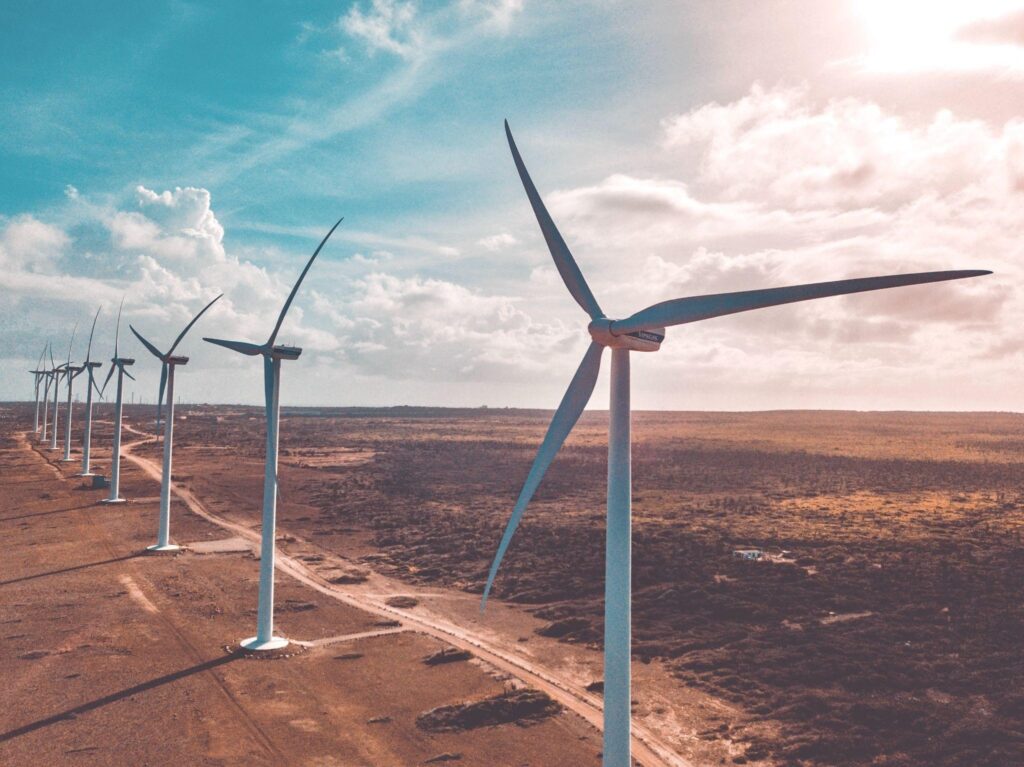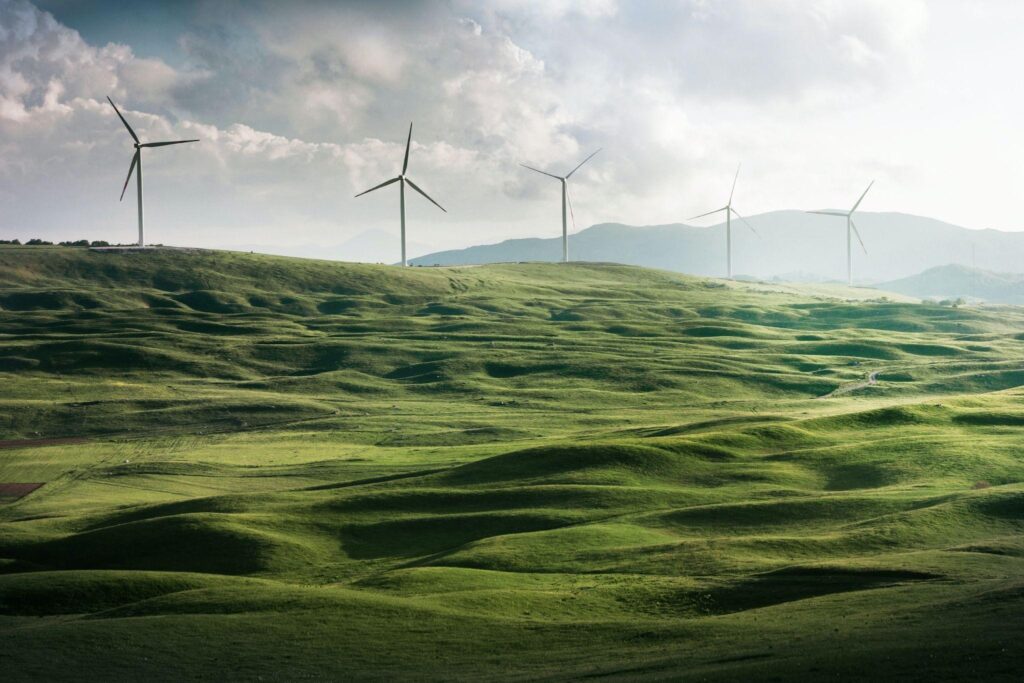Humans have harnessed the wind for millennia, from sailboats to traditional windmills. More recently, we are harnessing its kinetic energy to generate renewable electricity.
Wind turbines are large structures equipped with propeller-like blades that spin when exposed to wind currents, connecting directly to a shaft which powers a generator and producing electricity in return.
How a Windmill Works
Blades
Windmill blades capture wind energy and convert it into usable energy, turning the shaft wheels. This is the simple answer to hvordan fungerer en vindmølle; there is so much more to learn! Made from lightweight composite materials such as fiberglass or carbon fiber, their lightness and strength makes recycling them difficult; in fact, it requires significant amounts of energy just to deconstruct them!
A windmill’s blade length plays an integral role in its ability to produce electricity. Longer blades have more surface area for collecting wind, which helps create more power output from this machine.
Windmill power production depends heavily on their “area swept.” This refers to the total circular area covered by their blades as they rotate, with optimal feathering (angle at which blade must point in order to produce enough force to drive rotor) determined empirically based on experience.
Generally speaking it should generate as much energy as the tip feathers on bird wings – though this figure varies depending on the operating height of the windmill.
Feathering may depend on several variables such as air type, its moisture content and elevation at which a turbine operates. Heavier air density will exert more force on blades than thin dry air does for instance.
The speed of a rotor is managed through two mechanisms. First is a pitch system which adjusts blade angles according to wind conditions; and secondly a “feathering” system that slows it when conditions reach dangerously high speeds. A governor – an iron spring formed into a wheel shape – keeps it at an ideal angle.
Windmills of old were powered by sails; today’s models typically use electric motors connected to an electrical grid for energy distribution. Kinetic energy from spinning wheels is transformed into electrical energy which can then be used for lighting homes, heating them or running factories. Unlike fossil fuels which eventually run out, wind energy provides a clean, sustainable resource which never runs out. You can visit this site to learn more about fossil fuels.
Vanes
Windmills use vanes to capture wind energy and keep their structure balanced during high winds. Furthermore, these vanes serve to stabilize their structure by keeping its rotor in its center of its stroke.
When there’s too much wind gusting through, however, higher vanes can be raised to prevent blades from flying off or hitting other parts of the structure and causing them to blow away or cause other damages.
Vanes provide an effective means of aligning rotors with wind without using active systems, making them popular with small turbines that prioritize simplicity and cost. Unfortunately, vanes do promote turbulence that reduces energy extraction efficiency; for this reason they should not be employed on large commercial wind turbines that demand maximum performance efficiency.
Early wind vanes were straightforward directional indicators mounted to poles or towers for easy viewing from afar. Their function is to point into the wind – for instance if the vane points west it indicates westerly winds. Modern aerovanes combine this function with an anemometer to give a more accurate reading.
Modern windmill vanes serve more than one function; in addition to providing wind direction indication, they also play an essential role in pumping water from underground aquifers.
Depending on ground conditions and ground depth requirements, digging may be required in order to access water supplies; using its tiltable nacelle and valve mechanism, windmills can then pump this liquid up towards the surface using pumping forces determined by wind speed.
Windmill vanes make an effective billboard and advertising space, so manufacturers frequently hand-lettered or stenciled them with product information or pitches. Furthermore, they may be painted to add beauty and style.
Early metal windmills had curved blades that captured more wind than their wooden counterparts, as well as back-geared mechanisms rather than direct stroke systems to capture more wind and pump more water with each wheel revolution than their wooden counterparts using direct stroke mechanisms.
Shaft
Windmills share a common design premised upon gravity and aerodynamics.
Their structure consists of a central hub connected by long arms to which are attached vertical blades attached by long arms; these are designed so as not to produce forces which exceed gravity-induced drag forces on either end of each blade thus preventing aerodynamic stall and transferring mechanical energy of wind into the shaft.
The blades of wind turbines are attached to metallic hubs via low-speed shafts connected to low-speed and high-speed shafts, respectively, that then turn high-speed shafts connected to a nacelle which contains all components including the rotor, controller, shafts and gearbox. This tower-mounted device captures wind energy.
Wind energy transfers its mechanical energy directly to a gear mechanism which connects it with an output shaft that meshes with larger gears in its nacelle, increasing rotation speed in order to generate electricity.
Importantly, even though the rotor is spinning, some energy will still be lost due to friction between gears and shafts, as well as resulting from heat generated due to this heat transference process. Even cooling may help mitigate some heat generation; however, this solution won’t always provide optimal results as cooling systems also release energy through heat transfer to surrounding air.
That is why it is essential that the shaft be aligned properly in order to minimize energy loss and ensure maximum efficiency from windmills. Misalignment reduces torque, rendering the rotor less efficient and possibly resulting in damage to other parts of the windmill.
Investigations of wind turbine efficiency have found that misalignment can reduce efficiency by up to 15%, with even small misalignments leading to an increase of temperature by even small amounts.
Gears
Wind turbines convert mechanical energy into electricity using the same principles that steam-powered engines do, using aerodynamic forces to create lift and drag, similar to airplane propellers.
Air pressure differences across each blade produce lift that is significantly stronger than any force pushing back on it, creating drag. Lift is used to spin the rotor before being transferred through shafts and gears (known as nacelles) to an electricity generator which converts this rotational energy into electrical current.
Wind turbine nacelles house an anemometer for measuring wind speed. A controller keeps the rotor within set limits so as to avoid damage during high winds; this controller can also stop the device mechanically, electrically or hydraulically as necessary.
While a rotor rotates, its vanes adjust to catch wind’s flow. Mechanical movement from this rotational movement is converted into electrical energy using gears – including an intermediate one which changes rotational speed between two shafts – for efficient conversion into electricity.
Intermediate gears are an integral component of design as they allow for smaller generators than would otherwise be possible if the rotor were connected directly to the shaft.
By translating its speed into equivalent revolutions per minute on the generator, their size can be reduced without any loss in performance.
Windmill gears serve to divide up the power generated by two large cogwheels into halves that can be directed toward consumers in different locations, making the generator more cost effective and adaptable to its specific local conditions.
Windmills are used today to grind grain and pump water, though their use has become less prevalent due to modern energy sources becoming more accessible to most people and traditional windmills being less effective at producing electricity than their modern counterparts.
Wind projects typically incur the greatest expenses from purchasing and installing turbines; subsequent fuel savings allow for reduced operating expenses and reduce overall project expenses. Wind energy is an environmentally-friendly source of electricity generation that creates it without producing harmful emissions. Wind power’s benefits range from reduced dependency on foreign sources of energy production, reduced environmental damage, economic benefits for generating economies across the nation and improved resilience during times of emergency.









Leave a Comment
You must be logged in to post a comment.